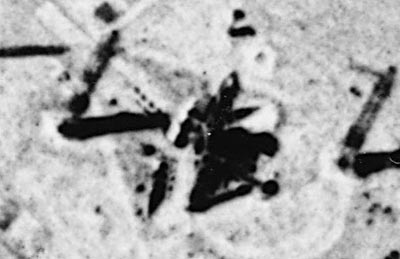Webb’s Giant<< page 2: fleeing from the press Webb’s GiantIn 1967 the political environment changed, and as a result, Webb finally broke his two-and-a-half-year public silence on the Soviet rocket effort. In March 1967 the intelligence community produced an updated National Intelligence Estimate on the Soviet space program. In January NASA had suffered a devastating setback with the Apollo 1 fire, but this new estimate stated that despite the American disaster, the Soviets were still not likely to beat the Americans to the moon at their present schedule. But by spring and summer 1967 NASA was under considerable pressure because of the Apollo 1 fire, and Congress was looking harder at its budget. Webb felt it necessary to go public about the Soviet capabilities. In July 1967 Webb told the Senate Subcommittee on Appropriations that “in my view, they are preparing to launch a booster with an appropriate large payload that will be larger than the Saturn V and that will give them the image and capability for the next several years of being ahead of the U.S. program. So at the time we are reducing at the rate of 5,000 per month in manpower, they are increasing.” Webb also said that he had told the committee the same thing the previous year, but that information did not make it into the press, possibly because it was presented in closed session.
In October at a news conference in Houston, Texas, Webb was asked about the space race by a reporter. Webb again responded that the Soviets “are preparing to fly boosters bigger than the Saturn V with appropriate payloads.” But the CIA was still uncertain if the Soviets were preparing to launch a lunar mission or a large space station. In December 1967 for the first time American spy satellites photographed the Soviet rocket on the launch pad. The Soviets designated this rocket the N-1. Before it had appeared, Sayre Stevens and his fellow CIA analysts initially called it “the big mother,” until their superiors were told that such a salty term was not a proper intelligence designation. Now that the rocket had made its public debut for American intelligence experts, they started calling it the “Jay bird,” or the “J-vehicle.” In early February 1968 Webb spoke about the rocket before the House Science and Astronautics Committee where he said that the Soviets “soon will be in a position to launch a booster with greater thrust than the Saturn V.” In response to questions supplied to him ahead of time, Webb stated that “in the coming year, still larger Soviet boosters will be coming into use. During 1968, or shortly thereafter, they will have available a booster with over 10 million pounds of thrust.” Dr. Wernher von Braun was there as well and also answered some questions about the vehicle. He said “as Mr. Webb testified, there is reason to believe that the Russians are indeed working on such a vehicle.” That reason was the photographs of the rocket sitting on its launch pad, taken by satellites that the U.S. government would not acknowledge existed. But von Braun also added “today they are at most a year behind us,” a statement that was entirely consistent with the latest intelligence information.
Webb’s comments may have made someone in the intelligence community uneasy, because late in the month two people from the CIA, including the agency’s assistant legislative counsel, went to NASA to review his testimony. But if they found any problems with it, the result remains unknown. By September 1968 Webb called the CIA to seek approval to show satellite reconnaissance photographs of Complex J to President Johnson. David Brandwein, the Director of the CIA’s Foreign Missile and Space Analysis Center, told Webb that there was no problem with doing this. Johnson, Brandwein knew, had already been briefed on this information. Cocktail party gossip and the Giant’s legacy of failureBy this time members of the press had nicknamed the unseen rocket “Webb’s Giant.” According to Florida’s Today newspaper, some of them also called it “the James E. Webb Memorial Rocket.” They never saw it, and they wondered if it was real. Although the whispering campaign continued at Washington cocktail parties, the few people in the know, the ones who really mattered, understood that Webb’s Giant was not a product of the administrator’s over-active imagination. The Soviet N-1 was in fact Webb’s ultimate insurance policy against canceling Apollo, and a useful weapon to fight cuts in NASA’s budget. As long as the Soviets continued to roll that massive rocket out onto the pad and American satellites photographed it, the threat was real. Nobody was going to cancel the Moon program, or even slow it down significantly. That kind of powerful shield against program cancellation has never existed for any other NASA administrator. Unfortunately, Webb’s Giant suffered poorly in the annals of history. The N-1 blew up four times between early 1969 and November 1972. One of the legacies of this failure was that it removed pressure from American presidents and the Congress to maintain higher levels of NASA spending. By the late 1960s the Soviets were not rivaling the United States in space to the same extent they had at the beginning of the decade, so it was safe to cut NASA’s budget and to shut down the Saturn V production line. Some of these failures were reported in the press. But no photographs were ever released of the Soviet rocket until two decades later, and that created another historical legacy as well. Because Webb’s Giant never reached orbit, reporters and others who doubted its existence had no independent confirmation that it was real. They soon concluded that it had only been a figment of James Webb’s imagination, and that the United States had never been involved in a race to the moon. But today we know the truth. Webb knew, he tried to tell us, and many people never believed him. Home |
|
